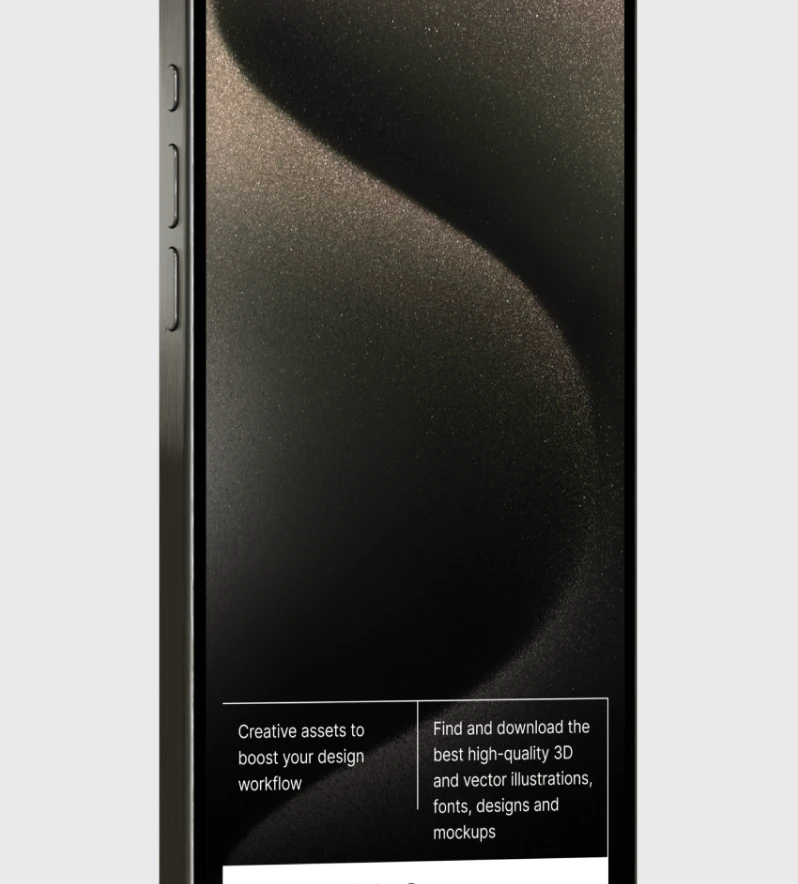Effective Strategies for User Experience (UX) Design
Effective Strategies for User Experience (UX) Design
Effective Strategies for User Experience (UX) Design
Effective Strategies for User Experience (UX) Design
Business
/
Samuel Kovatski
Business
/
Samuel Kovatski
Business
/
Samuel Kovatski
Business
/
Samuel Kovatski




Source:
Samuel Kovatski
In today's digital landscape, user experience (UX) design is more critical than ever. A seamless and intuitive user experience can make the difference between a thriving digital product and one that struggles to gain traction. In this article, we explore effective strategies for UX design that can elevate your product and delight your users.
1. Understand Your Users
Effective UX design begins with a deep understanding of your target audience. Take the time to research and analyze your users' needs, preferences, and pain points. Conduct user interviews, surveys, and usability tests to gather valuable insights. By understanding your users' goals and motivations, you can tailor your design to meet their needs effectively.
2. Focus on Usability
Usability is at the heart of a successful user experience. Ensure that your design is intuitive and easy to navigate. Prioritize clear navigation, logical information architecture, and intuitive interactions. Keep user interfaces (UI) clutter-free and consistent to minimize cognitive load and enhance usability. Remember, simplicity is key.

Source: Samuel Kovatski
3. Embrace User-Centered Design
User-centered design puts the needs and preferences of users at the forefront of the design process. Involve users in the design process through co-design sessions, usability testing, and feedback loops. Continuously iterate and refine your designs based on user input. By actively involving users in the design process, you can create products that truly resonate with your audience.
4. Design for Accessibility
Accessibility is an essential aspect of UX design. Ensure that your product is accessible to users of all abilities, including those with disabilities. Follow best practices for accessibility, such as providing alternative text for images, ensuring proper color contrast, and implementing keyboard navigation. Designing with accessibility in mind not only improves the user experience for all users but also aligns with ethical and legal considerations.
5. Optimize Performance
Performance plays a significant role in user experience. A slow-loading website or app can frustrate users and lead to high bounce rates. Optimize performance by minimizing page load times, optimizing images and multimedia content, and leveraging caching techniques. Prioritize performance optimization throughout the design and development process to ensure a smooth and seamless user experience.
6. Iterate and Test Continuously
The design process doesn't end with the launch of a product. Continuously iterate and test your designs based on user feedback and data insights. Use analytics tools to gather quantitative data on user behavior, and conduct usability testing to gather qualitative feedback. By iteratively refining your designs based on user insights, you can create products that evolve with the needs of your users.
Conclusion
Effective UX design is a multifaceted endeavor that requires a deep understanding of users, a focus on usability, and a commitment to continuous improvement. By embracing user-centered design principles, designing for accessibility, and prioritizing performance optimization, you can create products that delight users and drive success. Remember, the key to effective UX design is putting the needs of your users first and continuously iterating based on their feedback and insights.
In today's digital landscape, user experience (UX) design is more critical than ever. A seamless and intuitive user experience can make the difference between a thriving digital product and one that struggles to gain traction. In this article, we explore effective strategies for UX design that can elevate your product and delight your users.
1. Understand Your Users
Effective UX design begins with a deep understanding of your target audience. Take the time to research and analyze your users' needs, preferences, and pain points. Conduct user interviews, surveys, and usability tests to gather valuable insights. By understanding your users' goals and motivations, you can tailor your design to meet their needs effectively.
2. Focus on Usability
Usability is at the heart of a successful user experience. Ensure that your design is intuitive and easy to navigate. Prioritize clear navigation, logical information architecture, and intuitive interactions. Keep user interfaces (UI) clutter-free and consistent to minimize cognitive load and enhance usability. Remember, simplicity is key.

Source: Samuel Kovatski
3. Embrace User-Centered Design
User-centered design puts the needs and preferences of users at the forefront of the design process. Involve users in the design process through co-design sessions, usability testing, and feedback loops. Continuously iterate and refine your designs based on user input. By actively involving users in the design process, you can create products that truly resonate with your audience.
4. Design for Accessibility
Accessibility is an essential aspect of UX design. Ensure that your product is accessible to users of all abilities, including those with disabilities. Follow best practices for accessibility, such as providing alternative text for images, ensuring proper color contrast, and implementing keyboard navigation. Designing with accessibility in mind not only improves the user experience for all users but also aligns with ethical and legal considerations.
5. Optimize Performance
Performance plays a significant role in user experience. A slow-loading website or app can frustrate users and lead to high bounce rates. Optimize performance by minimizing page load times, optimizing images and multimedia content, and leveraging caching techniques. Prioritize performance optimization throughout the design and development process to ensure a smooth and seamless user experience.
6. Iterate and Test Continuously
The design process doesn't end with the launch of a product. Continuously iterate and test your designs based on user feedback and data insights. Use analytics tools to gather quantitative data on user behavior, and conduct usability testing to gather qualitative feedback. By iteratively refining your designs based on user insights, you can create products that evolve with the needs of your users.
Conclusion
Effective UX design is a multifaceted endeavor that requires a deep understanding of users, a focus on usability, and a commitment to continuous improvement. By embracing user-centered design principles, designing for accessibility, and prioritizing performance optimization, you can create products that delight users and drive success. Remember, the key to effective UX design is putting the needs of your users first and continuously iterating based on their feedback and insights.
Our work has been featured by:
Our work has been featured by:
Our work has been featured by:
What’s next?

Branding
/
Samuel Kovatski
In today's fast-paced digital landscape, speed is paramount. Whether you're running an e-commerce store, a blog, or a corporate website, optimizing website performance is crucial for success. In this article, we'll explore why speed matters and share practical tips for enhancing your website's performance to deliver an exceptional user experience.
Why Speed Matters:
1. User Experience:
Speed directly impacts user experience. Research shows that users expect websites to load within seconds. A slow-loading website frustrates visitors and increases bounce rates, leading to lost opportunities for engagement and conversions.
2. Search Engine Rankings:
Search engines prioritize fast-loading websites in their rankings. Websites with slow load times may experience lower visibility in search results, reducing organic traffic and hindering overall digital marketing efforts.
3. Conversions and Revenue:
Website speed has a direct correlation with conversions and revenue. Studies have found that even a one-second delay in page load time can result in decreased conversion rates. Faster websites not only improve user satisfaction but also increase the likelihood of visitors converting into customers.

Source: Samuel Kovatski
Tips for Optimizing Website Performance:
1. Minimize HTTP Requests:
Reduce the number of HTTP requests by minimizing the use of external scripts, stylesheets, and images. Combine CSS and JavaScript files, and utilize CSS sprites to reduce the number of image requests.
2. Enable Browser Caching:
Leverage browser caching to store static files locally on users' devices. This reduces server load and speeds up page load times for returning visitors. Configure caching headers to specify how long files should be cached.
3. Optimize Images:
Compress and optimize images to reduce file sizes without compromising quality. Use tools like Photoshop, ImageOptim, or online services like TinyPNG to optimize images before uploading them to your website.
4. Implement Lazy Loading:
Implement lazy loading for images and videos to defer loading until they are needed. This technique prioritizes the loading of content above the fold, improving initial page load times and user experience.
5. Minify and Combine Files:
Minify CSS, JavaScript, and HTML files to remove unnecessary characters, comments, and whitespace. Combine multiple files into a single file to reduce the number of server requests and improve loading speed.
6. Utilize Content Delivery Networks (CDNs):
Utilize CDNs to distribute website content across multiple servers worldwide. CDNs cache content closer to users' locations, reducing latency and improving page load times for visitors regardless of their geographic location.
7. Optimize Server Response Time:
Optimize server response time by upgrading hosting plans, optimizing database queries, and implementing caching mechanisms. Monitor server performance regularly and address any bottlenecks or issues promptly.
8. Leverage Browser-Side Performance Tools:
Utilize browser-side performance tools like Google PageSpeed Insights, GTmetrix, or Pingdom to analyze your website's performance metrics. Identify areas for improvement and implement suggested optimizations to enhance speed and user experience.
Conclusion:
In today's digital era, optimizing website performance is non-negotiable. A fast-loading website not only enhances user experience but also boosts search engine rankings, conversions, and revenue. By implementing the tips outlined in this article, you can ensure that your website delivers optimal performance and remains competitive in the online landscape.

Branding
/
Samuel Kovatski
In today's fast-paced digital landscape, speed is paramount. Whether you're running an e-commerce store, a blog, or a corporate website, optimizing website performance is crucial for success. In this article, we'll explore why speed matters and share practical tips for enhancing your website's performance to deliver an exceptional user experience.
Why Speed Matters:
1. User Experience:
Speed directly impacts user experience. Research shows that users expect websites to load within seconds. A slow-loading website frustrates visitors and increases bounce rates, leading to lost opportunities for engagement and conversions.
2. Search Engine Rankings:
Search engines prioritize fast-loading websites in their rankings. Websites with slow load times may experience lower visibility in search results, reducing organic traffic and hindering overall digital marketing efforts.
3. Conversions and Revenue:
Website speed has a direct correlation with conversions and revenue. Studies have found that even a one-second delay in page load time can result in decreased conversion rates. Faster websites not only improve user satisfaction but also increase the likelihood of visitors converting into customers.

Source: Samuel Kovatski
Tips for Optimizing Website Performance:
1. Minimize HTTP Requests:
Reduce the number of HTTP requests by minimizing the use of external scripts, stylesheets, and images. Combine CSS and JavaScript files, and utilize CSS sprites to reduce the number of image requests.
2. Enable Browser Caching:
Leverage browser caching to store static files locally on users' devices. This reduces server load and speeds up page load times for returning visitors. Configure caching headers to specify how long files should be cached.
3. Optimize Images:
Compress and optimize images to reduce file sizes without compromising quality. Use tools like Photoshop, ImageOptim, or online services like TinyPNG to optimize images before uploading them to your website.
4. Implement Lazy Loading:
Implement lazy loading for images and videos to defer loading until they are needed. This technique prioritizes the loading of content above the fold, improving initial page load times and user experience.
5. Minify and Combine Files:
Minify CSS, JavaScript, and HTML files to remove unnecessary characters, comments, and whitespace. Combine multiple files into a single file to reduce the number of server requests and improve loading speed.
6. Utilize Content Delivery Networks (CDNs):
Utilize CDNs to distribute website content across multiple servers worldwide. CDNs cache content closer to users' locations, reducing latency and improving page load times for visitors regardless of their geographic location.
7. Optimize Server Response Time:
Optimize server response time by upgrading hosting plans, optimizing database queries, and implementing caching mechanisms. Monitor server performance regularly and address any bottlenecks or issues promptly.
8. Leverage Browser-Side Performance Tools:
Utilize browser-side performance tools like Google PageSpeed Insights, GTmetrix, or Pingdom to analyze your website's performance metrics. Identify areas for improvement and implement suggested optimizations to enhance speed and user experience.
Conclusion:
In today's digital era, optimizing website performance is non-negotiable. A fast-loading website not only enhances user experience but also boosts search engine rankings, conversions, and revenue. By implementing the tips outlined in this article, you can ensure that your website delivers optimal performance and remains competitive in the online landscape.

Branding
/
Samuel Kovatski
In today's fast-paced digital landscape, speed is paramount. Whether you're running an e-commerce store, a blog, or a corporate website, optimizing website performance is crucial for success. In this article, we'll explore why speed matters and share practical tips for enhancing your website's performance to deliver an exceptional user experience.
Why Speed Matters:
1. User Experience:
Speed directly impacts user experience. Research shows that users expect websites to load within seconds. A slow-loading website frustrates visitors and increases bounce rates, leading to lost opportunities for engagement and conversions.
2. Search Engine Rankings:
Search engines prioritize fast-loading websites in their rankings. Websites with slow load times may experience lower visibility in search results, reducing organic traffic and hindering overall digital marketing efforts.
3. Conversions and Revenue:
Website speed has a direct correlation with conversions and revenue. Studies have found that even a one-second delay in page load time can result in decreased conversion rates. Faster websites not only improve user satisfaction but also increase the likelihood of visitors converting into customers.

Source: Samuel Kovatski
Tips for Optimizing Website Performance:
1. Minimize HTTP Requests:
Reduce the number of HTTP requests by minimizing the use of external scripts, stylesheets, and images. Combine CSS and JavaScript files, and utilize CSS sprites to reduce the number of image requests.
2. Enable Browser Caching:
Leverage browser caching to store static files locally on users' devices. This reduces server load and speeds up page load times for returning visitors. Configure caching headers to specify how long files should be cached.
3. Optimize Images:
Compress and optimize images to reduce file sizes without compromising quality. Use tools like Photoshop, ImageOptim, or online services like TinyPNG to optimize images before uploading them to your website.
4. Implement Lazy Loading:
Implement lazy loading for images and videos to defer loading until they are needed. This technique prioritizes the loading of content above the fold, improving initial page load times and user experience.
5. Minify and Combine Files:
Minify CSS, JavaScript, and HTML files to remove unnecessary characters, comments, and whitespace. Combine multiple files into a single file to reduce the number of server requests and improve loading speed.
6. Utilize Content Delivery Networks (CDNs):
Utilize CDNs to distribute website content across multiple servers worldwide. CDNs cache content closer to users' locations, reducing latency and improving page load times for visitors regardless of their geographic location.
7. Optimize Server Response Time:
Optimize server response time by upgrading hosting plans, optimizing database queries, and implementing caching mechanisms. Monitor server performance regularly and address any bottlenecks or issues promptly.
8. Leverage Browser-Side Performance Tools:
Utilize browser-side performance tools like Google PageSpeed Insights, GTmetrix, or Pingdom to analyze your website's performance metrics. Identify areas for improvement and implement suggested optimizations to enhance speed and user experience.
Conclusion:
In today's digital era, optimizing website performance is non-negotiable. A fast-loading website not only enhances user experience but also boosts search engine rankings, conversions, and revenue. By implementing the tips outlined in this article, you can ensure that your website delivers optimal performance and remains competitive in the online landscape.

Business
/
Samuel Kovatski
In today's digital age, the variety of devices used to access the internet is staggering – from desktop computers and laptops to smartphones, tablets, and even smart TVs. As such, ensuring that your website looks and functions flawlessly across all these devices is paramount. This is where responsive design comes into play.
What is Responsive Design?
Responsive design is an approach to web design that ensures a website responds dynamically to the size and orientation of the user's screen. Rather than creating multiple versions of a website for different devices, responsive design allows for a single website to adapt fluidly to various screen sizes and resolutions.

Source: Samuel Kovatski
Best Practices for Responsive Design
1. Mobile-First Approach:
Start by designing for mobile devices and then progressively enhance the layout and features for larger screens. This ensures that your website is optimized for the smallest screens first, providing a solid foundation for larger devices.
2. Flexible Grid Layouts:
Use fluid grid layouts that automatically adjust to the size of the user's screen. This allows content to reflow and rearrange based on the available space, maintaining readability and usability across devices.
3. Media Queries:
Implement CSS media queries to apply different styles based on the device's characteristics, such as screen width, resolution, and orientation. This allows you to tailor the presentation of your website for optimal viewing on each device.
4. Optimized Images and Assets:
Optimize images and other assets for fast loading times on mobile devices. Use responsive image techniques, such as srcset and sizes attributes, to deliver the most appropriate image resolution based on the user's device.
5. Usability Testing:
Conduct usability testing across a variety of devices to ensure that your website functions as intended on each platform. Identify any usability issues or layout inconsistencies and address them promptly to deliver a seamless user experience.
Conclusion
Responsive design is no longer a luxury – it's a necessity in today's multi-device landscape. By adopting a responsive design approach, you can ensure that your website is accessible, user-friendly, and future-proofed for the evolving digital landscape. Embrace responsive design principles and craft websites that delight users on every device.

Business
/
Samuel Kovatski
In today's digital age, the variety of devices used to access the internet is staggering – from desktop computers and laptops to smartphones, tablets, and even smart TVs. As such, ensuring that your website looks and functions flawlessly across all these devices is paramount. This is where responsive design comes into play.
What is Responsive Design?
Responsive design is an approach to web design that ensures a website responds dynamically to the size and orientation of the user's screen. Rather than creating multiple versions of a website for different devices, responsive design allows for a single website to adapt fluidly to various screen sizes and resolutions.

Source: Samuel Kovatski
Best Practices for Responsive Design
1. Mobile-First Approach:
Start by designing for mobile devices and then progressively enhance the layout and features for larger screens. This ensures that your website is optimized for the smallest screens first, providing a solid foundation for larger devices.
2. Flexible Grid Layouts:
Use fluid grid layouts that automatically adjust to the size of the user's screen. This allows content to reflow and rearrange based on the available space, maintaining readability and usability across devices.
3. Media Queries:
Implement CSS media queries to apply different styles based on the device's characteristics, such as screen width, resolution, and orientation. This allows you to tailor the presentation of your website for optimal viewing on each device.
4. Optimized Images and Assets:
Optimize images and other assets for fast loading times on mobile devices. Use responsive image techniques, such as srcset and sizes attributes, to deliver the most appropriate image resolution based on the user's device.
5. Usability Testing:
Conduct usability testing across a variety of devices to ensure that your website functions as intended on each platform. Identify any usability issues or layout inconsistencies and address them promptly to deliver a seamless user experience.
Conclusion
Responsive design is no longer a luxury – it's a necessity in today's multi-device landscape. By adopting a responsive design approach, you can ensure that your website is accessible, user-friendly, and future-proofed for the evolving digital landscape. Embrace responsive design principles and craft websites that delight users on every device.

Business
/
Samuel Kovatski
In today's digital age, the variety of devices used to access the internet is staggering – from desktop computers and laptops to smartphones, tablets, and even smart TVs. As such, ensuring that your website looks and functions flawlessly across all these devices is paramount. This is where responsive design comes into play.
What is Responsive Design?
Responsive design is an approach to web design that ensures a website responds dynamically to the size and orientation of the user's screen. Rather than creating multiple versions of a website for different devices, responsive design allows for a single website to adapt fluidly to various screen sizes and resolutions.

Source: Samuel Kovatski
Best Practices for Responsive Design
1. Mobile-First Approach:
Start by designing for mobile devices and then progressively enhance the layout and features for larger screens. This ensures that your website is optimized for the smallest screens first, providing a solid foundation for larger devices.
2. Flexible Grid Layouts:
Use fluid grid layouts that automatically adjust to the size of the user's screen. This allows content to reflow and rearrange based on the available space, maintaining readability and usability across devices.
3. Media Queries:
Implement CSS media queries to apply different styles based on the device's characteristics, such as screen width, resolution, and orientation. This allows you to tailor the presentation of your website for optimal viewing on each device.
4. Optimized Images and Assets:
Optimize images and other assets for fast loading times on mobile devices. Use responsive image techniques, such as srcset and sizes attributes, to deliver the most appropriate image resolution based on the user's device.
5. Usability Testing:
Conduct usability testing across a variety of devices to ensure that your website functions as intended on each platform. Identify any usability issues or layout inconsistencies and address them promptly to deliver a seamless user experience.
Conclusion
Responsive design is no longer a luxury – it's a necessity in today's multi-device landscape. By adopting a responsive design approach, you can ensure that your website is accessible, user-friendly, and future-proofed for the evolving digital landscape. Embrace responsive design principles and craft websites that delight users on every device.












